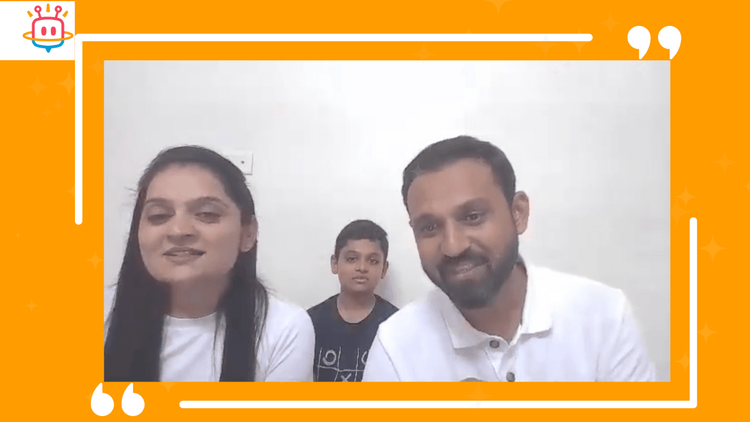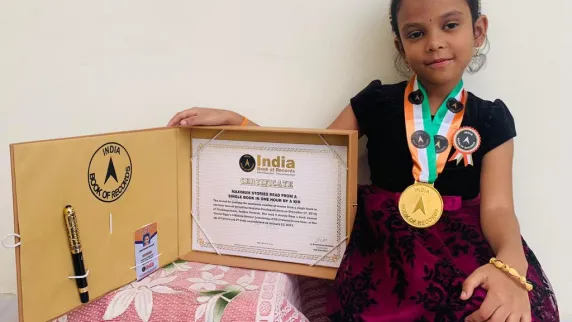How to Teach Sight Words: Effective Strategies for Kids

Table of Contents
- What Are Sight Words and Why Are They Important?
- Effective Strategies on How to Teach Sight Words
- Sight Words List for Kindergarten
- Fun Sight Word Activities for Kids
- Incorporating Sight Words into Daily Reading
- Signs Your Child Needs Sight Word Practice
- How Sight Words Differ from Phonics Words
- Integrating Sight Words into Storytelling and Reading Practi
- Common Mistakes to Avoid When Teaching Sight Words
- Empower Your Child with Sight Words
Learning to read is a thrilling milestone for young children, but mastering sight words can sometimes feel like a steep hill to climb. Imagine your child confidently recognising words like “the,” “and,” or “said” in their favourite storybooks—reading suddenly becomes exciting and fluid. This blog is your ultimate guide on how to teach sight words, covering everything from understanding what sight words are, recognising when a child needs extra practice, effective strategies, fun activities, digital tools, and tips for parents to support learning at home. By the end, you will have a complete toolkit to help children read with confidence, and discover how PlanetSpark can make learning even more engaging.
What Are Sight Words and Why Are They Important?
Sight words are the most commonly used words in English that young readers are encouraged to recognise instantly without sounding them out. Words like “is,” “you,” and “come” appear frequently in early reading material. Mastery of sight words allows children to focus on comprehension rather than decoding each word individually. This early fluency is crucial for building confidence, improving reading speed, and developing a love for reading.
Teaching sight words also strengthens memory and supports spelling skills. These words often do not follow regular phonetic rules, which is why memorisation and recognition are key. Incorporating them into everyday reading helps children read more naturally and reduces frustration, ensuring a positive learning experience.
Effective Strategies on How to Teach Sight Words
Teaching sight words effectively requires a combination of structured methods, interactive learning, and consistent practice. Here are proven strategies that make learning engaging and impactful:
1. Introduce Sight Words Gradually
Start with a small set of words, such as 3–5 words at a time. This prevents children from feeling overwhelmed and ensures mastery before adding new words.
Tip: Once children can confidently recognise these words in reading and writing, introduce the next set of words.
2. Use Multisensory Techniques
Children learn best when they engage multiple senses. Multisensory methods make sight word recognition more memorable:
Visual: Show the word on flashcards or word walls.
Auditory: Pronounce the word clearly and ask the child to repeat it.
Tactile: Let children trace words in sand, use finger paints, or build words with letter tiles.
3. Incorporate Repetition and Daily Practice
Consistency is key for sight word mastery. Short, frequent sessions of 5–10 minutes each day are more effective than long, irregular practice.
Example: Review previously learned words every morning and introduce one new word during bedtime reading.
Celebrate milestones to boost your child’s reading confidence
Enrol in PlanetSpark Communication Classes
4. Read Aloud Together
Reading aloud exposes children to sight words in context and improves comprehension. Encourage them to spot sight words while you read together.
Activity: Pause while reading a story and ask, “Can you find the word ‘and’ on this page?”
5. Use Word Games and Interactive Activities
Turning practice into a game makes learning fun and memorable. Some effective games include:
Sight Word Bingo: Call out words and have children mark them on their cards.
Word Treasure Hunt: Hide sight words around the room and ask children to find and read them.
Hopscotch Words: Write words on the ground for children to jump and read aloud.
6. Employ Flashcards and Word Walls
Visual reinforcement helps children remember words faster:
Flashcards: Review daily and shuffle them regularly to strengthen recall.
Word Walls: Display frequently used sight words in classrooms or at home for constant exposure.
7. Incorporate Sight Words into Writing Activities
Writing reinforces recognition and spelling. Encourage children to use sight words in simple sentences, journals, or stories.
Example: Ask your child to write, “I like to play” using the sight words “I,” “like,” and “to.”
8. Provide Positive Reinforcement
Celebrate progress, no matter how small. Praise motivates children to keep learning and builds confidence.
Tip: Use stickers, verbal encouragement, or a small reward system for motivation.
9. Personalise Learning
Observe your child’s pace and preferences. Some children respond better to visual activities, while others prefer hands-on or auditory learning. Adjust strategies to suit their learning style.
A combination of gradual introduction, multisensory learning, repetition, interactive games, and positive reinforcement ensures children learn sight words effectively. Using reading, writing, and visual tools together creates a holistic learning experience that is both fun and educational.
Encourage your child to spot sight words in storybooks
Enrol in PlanetSpark Communication Online Classes Now
Sight Words List for Kindergarten
Category | Sight Words Examples | Fun Tip to Teach |
|---|---|---|
Basic Words | the, a, and, is, it, to, in | Use flashcards and ask children to point them out in a storybook. |
Pronouns | I, you, he, she, we, me, my | Play “Who Am I?” game by creating simple sentences using these words. |
Action Words | go, play, see, come, like, make | Encourage children to act out the words while reading. |
Descriptive Words | up, down, big, small, fast, slow | Use toys or objects to visually demonstrate the meaning. |
Common Words in Sentences | be, do, can, at, on, for | Highlight these words in short sentences and ask children to read them aloud. |
Fun Words | jump, look, find, run, stop, said | Turn them into a word treasure hunt or hopscotch activity for hands-on learning. |
Tip for Parents and Teachers:
Make learning interactive by combining the table with games, drawing activities, or daily reading sessions. You can create a mini word wall at home using this table and add colourful visuals to make it more engaging.
Fun Sight Word Activities for Kids
Making sight word practice enjoyable boosts engagement and retention. Here are structured activities you can try:
1. Sight Word Bingo
How to Play: Create bingo cards with sight words. Call out words one by one; children mark the words on their cards.
Why It Works: Encourages recognition and quick recall.
Make reading a fun and rewarding daily habit
2. Word Treasure Hunt
How to Play: Hide sight word cards around the room or yard. Children find the words and read them aloud.
Why It Works: Combines movement with learning, making it memorable.
3. Sight Word Hopscotch
How to Play: Write sight words on the floor with chalk or tape. Children hop from word to word while reading aloud.
Why It Works: Adds a kinesthetic element to learning and keeps kids active.
4. Craft and Word Collage
How to Play: Let children decorate sight words using stickers, crayons, or cut-out letters.
Why It Works: Reinforces visual recognition while encouraging creativity.
5. Flashcard Race
How to Play: Show flashcards and ask children to read them as quickly as possible. Use a timer for fun competition.
Why It Works: Builds speed and confidence in recognising words.
Incorporating Sight Words into Daily Reading
Integrating sight words into everyday routines ensures consistent practice without making it feel like a chore.
Strategies:
Spot the Word
While reading storybooks, ask your child to spot sight words on each page.
Example: “Can you find the word ‘and’ here?”
Daily Sentence Practice
Engage in fun craft activities using sight words
Enrol today with PlanetSpark Communication Class now
Encourage children to create sentences using new sight words.
Example: “I like to play” (words: I, like, to, play).
Morning and Bedtime Reading
Include sight words in daily reading routines, even for 5–10 minutes. Consistency helps retention.
Word Integration in Conversation
Use sight words naturally during daily talk.
Example: “Can you go to your room and get your book?” (highlight “go,” “your,” “and”).
Activity | How to Incorporate | Learning Benefit |
|---|---|---|
Spot the Word | During story reading | Recognition in context |
Daily Sentence Practice | Write or say sentences | Reading, writing, comprehension |
Morning/Bedtime Reading | Short daily sessions | Routine reinforcement |
Conversation Integration | Highlight words in speech | Practical use, natural learning |
Signs Your Child Needs Sight Word Practice
Parents and teachers can often spot when a child needs extra support with sight words. Some common signs include:
Difficulty recognising simple words in books they have read before
Frequent guessing of words instead of reading them correctly
Slow reading pace with frequent pauses
Frustration or reluctance during reading activities
Struggling to spell basic words consistently
Recognising these signs early allows for timely intervention. Consistent, focused practice with sight words can help children overcome these challenges and build strong reading skill.
Want your child to become confident!
Explore PlanetSpark’s engaging learning platform now
How Sight Words Differ from Phonics Words
Understanding the difference between sight words and phonics-based words is essential to choosing the right teaching strategies.
1. Sight Words
Sight words are common words that children are encouraged to recognise instantly without having to sound them out. Many of these words do not follow regular phonetic rules, making them difficult to decode using standard phonics.
Examples: the, said, was, you, are
Key Characteristics:
Often irregular in spelling
Cannot always be sounded out using phonics rules
Require memorisation and repeated exposure
Essential for fluent reading
2. Phonics Words
Phonics words follow predictable patterns where letters correspond to specific sounds. Children can decode these words by blending sounds together.
Examples: cat, hop, run, pin, map
Key Characteristics:
Follow standard spelling and sound patterns
Can be sounded out and decoded
Learning focuses on blending sounds to form words
Builds the foundation for early reading skills
Why It Matters
Recognising the distinction helps teachers and parents apply the right approach:
Phonics: Use decoding strategies, letter-sound practice, and phonics games.
Sight Words: Use memorisation, repetition, word walls, and contextual reading.
This ensures children are confident readers and reduces frustration when encountering irregular words.
Play sight word games to make learning fun
Integrating Sight Words into Storytelling and Reading Practice
Embedding sight words into storytelling and reading practice helps children recognise words in context, making learning meaningful and enjoyable.
1. Storybook Highlighting
While reading aloud, highlight sight words on each page.
Ask the child to point out and read these words as they appear.
Example Activity: Use sticky notes to mark sight words in favourite storybooks. Each time a word appears, the child reads it aloud.
2. Interactive Storytelling
Encourage children to participate by adding sight words into stories.
Example: “Once upon a time, ___ went to the ___” and let the child fill in sight words like “he,” “she,” “and,” or “the.”
3. Daily Reading Practice
Incorporate sight words in short daily reading sessions.
Use simple sentences or mini-books that repeat target sight words for reinforcement.
4. Creative Writing with Sight Words
Ask children to create their own short stories using a set of sight words.
This encourages not only recognition but also comprehension and creative thinking.
5. Games within Stories
Turn sight word spotting into a game. For example, “How many times can you find the word ‘and’ in this story?”
Benefits:
Improves word recognition in context
Strengthens comprehension and fluency
Makes learning fun and meaningful
Create a word wall at home for easy recognition with PlanetSpark Communication online classes
Free trial available!

PlanetSpark has helped me enhance my communication and presentation skills in ways that directly impacted my career. The sessions focused on practical learning, from sentence formation to real-life conversations, that built my fluency and confidence. I can now express my ideas clearly during meetings and interviews, and it has significantly contributed to my professional progress.
Common Mistakes to Avoid When Teaching Sight Words
Teaching sight words effectively requires patience, consistency, and the right strategies. Avoiding common mistakes ensures children remain motivated and confident in their reading journey.
Here’s a structured breakdown:
1. Introducing Too Many Words at Once
Mistake: Overloading children with a long list of sight words can overwhelm them.
Why It’s a Problem: Children may forget words or feel frustrated, which reduces confidence.
Solution: Introduce 3–5 new words at a time and ensure mastery before adding more. Use repetition and review previously learned words regularly.
2. Relying Only on Rote Memorisation
Mistake: Expecting children to memorise words without context.
Why It’s a Problem: Memorisation alone may not help children recognise words in reading or writing tasks.
Solution: Combine memorisation with reading, storytelling, games, and writing exercises. Contextual learning reinforces recognition.
3. Skipping Daily Review or Practice
Mistake: Inconsistent practice or long gaps between sessions.
Why It’s a Problem: Children forget previously learned words, slowing progress.
Solution: Include short, daily sessions of 5–10 minutes. Integrate words into conversations, reading, and play.
4. Ignoring Errors or Correcting Harshly
Mistake: Overlooking mistakes or scolding children for incorrect answers.
Why It’s a Problem: Can lower motivation and create anxiety around reading.
Solution: Gently correct errors, provide positive reinforcement, and encourage repeated practice. Celebrate small successes.
5. Comparing Progress with Others
Mistake: Measuring a child’s progress against peers or siblings.
Why It’s a Problem: Every child learns at their own pace. Comparisons can cause stress or discourage learning.
Solution: Focus on individual progress and celebrate personal milestones.
6. Neglecting Multisensory Approaches
Mistake: Teaching sight words only visually or verbally.
Why It’s a Problem: Children learn better when multiple senses are engaged.
Solution: Include tactile (tracing, building with letter tiles), auditory (reading aloud), and kinesthetic (movement games) techniques.
7. Overlooking Fun and Engagement
Mistake: Treating sight word practice as a boring drill.
Why It’s a Problem: Children may lose interest and resist learning.
Solution: Use games, storytelling, crafts, and interactive activities to make learning fun.
Tips for Parents: Supporting Sight Word Learning at Home
Parents play a key role in sight word mastery:
Make learning playful with games and daily reading practice
Use praise and positive reinforcement for motivation
Set realistic goals and celebrate small achievements
Integrate sight words in conversation, not just reading
Encourage storytelling using sight words to build comprehension
A consistent and supportive approach strengthens children’s reading skills significantly.

Why Choose PlanetSpark Communication Skills Program?
PlanetSpark offers a comprehensive Communication Skills course designed for young learners that complements sight word practice.
Key USPs of the PlanetSpark Communication Skills Course
Interactive Live Sessions
Children participate in live classes with trained instructors, encouraging active engagement and real-time feedback.Personalised Learning Path
Each child receives customised guidance based on their current skill level and learning pace, ensuring effective progress.Confidence and Speaking Skills
The course focuses on building confidence in reading, speaking, and presenting ideas clearly in both classroom and daily life scenarios.Fun and Engaging Activities
Lessons include games, storytelling, and interactive exercises that make learning enjoyable while reinforcing core skills.Integration with Reading and Sight Words
Children practice sight words and sentence formation in context, which enhances reading fluency and comprehension.Progress Tracking for Parents
Regular updates and performance reports help parents monitor improvement and identify areas needing extra focus.Focus on Soft Skills
Beyond reading and communication, the program nurtures listening, articulation, and interpersonal skills essential for holistic development.
By joining PlanetSpark, children not only improve sight word recognition but also develop crucial communication skills for school and life.
Empower Your Child with Sight Words
Teaching sight words effectively can transform your child’s reading journey. With structured practice, interactive activities, and supportive tools, children become confident, fluent readers who enjoy exploring new stories. Integrating sight words into daily routines ensures lasting mastery, while platforms like PlanetSpark make learning fun, interactive, and impactful. Start today, and watch your child shine as a confident reader with the skills to succeed both academically and socially.
Frequently Asked Questions
Sight words are common words that children are encouraged to recognise instantly without sounding them out. They often do not follow regular phonetic rules, so memorisation and repeated exposure help children read fluently.
Typically, children aged 4–7 years (pre-K to early Grade 1) start learning sight words. Struggling readers up to 8–9 years can also benefit from extra practice to build reading confidence.
Parents can use games, flashcards, storytelling, treasure hunts, or crafts to engage children. Short daily practice sessions combined with praise and interactive activities make learning enjoyable and effective.
PlanetSpark’s Communication Skills course integrates sight word practice into interactive lessons. Children gain confidence in reading and speaking through games, storytelling, and live guidance from expert instructors.
PlanetSpark focuses on personalised learning, engaging activities, and consistent feedback. Kids not only recognise sight words but also enhance reading fluency, articulation, and confidence, making learning holistic and fun.
No, sight words also help children in writing, spelling, and speaking. Recognising common words quickly allows children to focus on understanding sentences and expressing ideas confidently.
Mastery varies by child and practice frequency. With consistent daily practice and engaging methods like games, reading, and PlanetSpark lessons, most children can achieve proficiency within a few months.
Meet Our Rising SuperStars
Meet students who turned their communication journey into remarkable success stories.
Book a Free Demo NowDownload Free Worksheets
Personalized Communication Report
Record a video to get a AI generated personalized communication report for your child

Hi There, want to try these
tips for your child with
LIVE with our expert coach?
Let's check your child's
English fluency






